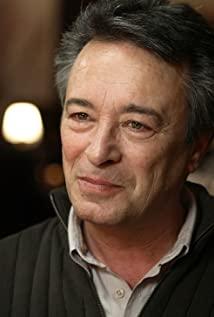The most important thing about using several stories to form a movie is the theme. The first layer of the theme of "Savage Tales" is how ordinary people go to collapse, and the second layer theme is violence.
The theme of the first layer is easy to understand. The protagonists of the six stories are people who are common in life. They may live around us, or they may be ourselves.
A child who has been bullied since childhood, an angry young aunt, a driver with road rage, an honest middle-aged man, a father with a weak son, and a bride who is immersed in the joy of the wedding.
They are ordinary people who can't be more ordinary, living around us. They have anger in their hearts, just like us, but for different reasons. But when everyone has an outbreak, the rabbit will bite people in a hurry.
All six stories are about revenge.
It's a big deal, but like I've always said before, it's the little things that are crushing, but they can add up to destroy a person. Some people choose to self-destruct, and some people fight against the odds.
This is also the most attractive part of the movie, being forced to the extreme is to do it.
This kind of feeling is really cool, and it also makes "Savage Tales" about the collapse, but without a trace of depression, but with the relaxed soundtrack, people feel comfortable from the inside out. I might even say it's the coolest movie I've seen in a while.
Everyone bullies me, what should I do? Dry!
Some people use their power for personal gain and endanger the society, what should I do? Dry!
Someone is arrogant and unreasonable, what should I do? Dry!
Organizing Ruined My Life, So What? Dry!
Someone wants to take advantage of the fire, what should I do? Dry!
I saw the groom and his mistress on the wedding day, what should I do? Dry!
Each story can be summed up in one word, that is, do it!
When they saw that they were forced to go berserk by the docile rabbits and turned everything. That feeling is simply cool and can't be more cool.
I personally like the last story the most, especially when the beautiful bride foamed at the mouth of the groom and threw the mistress out and smashed all over her body, smiling and cutting cakes with her girlfriends, taking selfies, and letting the band play music.
It really doesn't get any better than this.
I remember reading a book that said why humans like revenge so much. From "Wuthering Heights" to "Hamlet", everyone likes to watch the clip of the enemy who was tortured to death, that is because we often do not have the courage to do so in real life.
Everyone has a dark side and the urge to destroy. But due to social morality and other considerations, everyone can only suppress their hearts.
Who doesn't want to stab a little bitch to death, punch a big bitch, smash my bully with a fire extinguisher, and insult my grandson with a brick.
However, when we encounter this kind of thing, most of us can only smirk a few times in embarrassment, turn around and curse a few words. At most, I was in a hurry to fight, and I didn't dare to kill.
That's because there are laws, morals, social norms in check. Even for some people, it is still a human restriction. Because in real life, it would be anti-social to do this, self-discipline is controlling everyone not to be animalized, and reason is controlling impulses.
Literary and artistic works are different. They do what we want to do but have not done it, and there are no constraints in the virtual world. It also vents the anger that people have suppressed in their hearts.
Interestingly, three of the six stories have contrasting characters for the protagonists. One is the real us, the other is the absurd protagonist. The real we suppress ourselves, the absurd protagonist does what we want to do.
Really cool.
Let’s talk about the second level of meaning, which is deeper under the theme of revenge, about violence.
The perpetrator can be someone above the absolute class, such as a congressman (second story), a big company (third story), a lawyer (fifth story). It can also be an ordinary person, such as a person with a life-destroying status (the first story), a person with power (the second story), the groom (the sixth story).
In each story, the perpetrators have no remorse for their atrocities, even as a reason for their superiority and arrogance. They hurt others and take pleasure in them, they don't care how others feel. until their interests are deprived of those under oppression. But in addition to violence, there are several stories with other metaphors, the most metaphor of which is class.
In the first story, the abuser is someone whose class is above the abused. They are teachers, doctors, parents, etc. who provide protection and guidance to the abused, but they do not. The abused has always been in a weak position and can only accept powerless resistance. And when he stepped into a class higher than them, who had the power to control their life and death, he showed no mercy.
This story has been adapted as a joke by many people. After all, who doesn't want to take revenge on those who have hurt them.
The class in the second story is very obvious, and the film also sets up two contrasts. One is a person who is close to daily life and dares not speak out even if they are oppressed, and the other is an absurd angry youth. The fragmented plot does not explain the cause and effect too much, but from the lines, we can see the violent oppression that the angry youth has been subjected to.
On the screen, the director often makes two people appear in two symmetrical windows, forming a great contrast. It feels like the contrast between the light and dark sides of a person's heart.
In the third story, the abuser and the abused are in two classes at the beginning. The perpetrator came from the bottom of society. He drove a broken car and was arrogant and unreasonable. The abused person comes from the upper class, drives a top-spec Audi, does not work hard, and speaks modestly. The struggle between two people can be said to be a struggle between civilization and barbarism. In the face of violence, the barrier of the two people's class is broken.
The ending is very ironic. On the one hand, it is the final reconciliation of civilization and barbarism, and on the other hand, it can be said to be the fate after being violently broken through the class.
The fourth story is all about the wrath of the little people, where the class is the power. At the beginning of the film, people's dissatisfaction with the power is expressed through the side, but they can only obey the power. The protagonist is an honest man, he wanted to resist, but was forced to have nothing. In the end, he chose extreme means, aroused public anger, and was eventually regarded as a hero.
There are triple classes in this story, big corporations, petty citizens, and government. Among them, petty citizens are the targets of oppression and violence by big companies, but once the petty townspeople are collectively angry, the government will come forward to sacrifice the big companies.
The fifth story can be said to be a struggle between classes, and the perpetrators are also divided into several layers. The middle class versus the bottom class, the lawyers and the middle class who can change their destiny, the judiciary and the people. In the three-tier relationship, the bottom class is reduced to a tool, the middle class is used as a money bag, and those who want to profit from it are the judiciary and lawyers at the top who can control the situation.
In these multiple relationships, the middle class has become the target of other classes' attacks because of its own sins, and has also become the target of the perpetrators who want to profit from it, and everyone wants to get something from it. Once someone asks for something, the class attribute is no longer important, and the maximization of interests is the most important thing.
The sixth story is mainly about love and has nothing to do with class. But one of the clips is very interesting, that is, what the groom's mother cares most about is not the bride's misconduct, not her malicious derailment, but her saying that she will swallow all the groom's property. In this story, love is the main element and the rest can be ignored.
Hatred because of love, will use extreme means to retaliate. If you cheat, I will cheat too. Not only will I cheat, but I will also smash your mistress. If you make me suffer, then I will repay it tenfold and one hundredfold. This is my wedding, and I want to celebrate it in advance for the painful second half of your life in the future.
But all hysterical behavior begins with one word, and that is love.
The ending is unexpected and reasonable, and fanatical love really cannot be understood with traditional thinking.
"Savage Tales" is a movie that can be watched several times without getting tired of it.
View more about Wild Tales reviews











